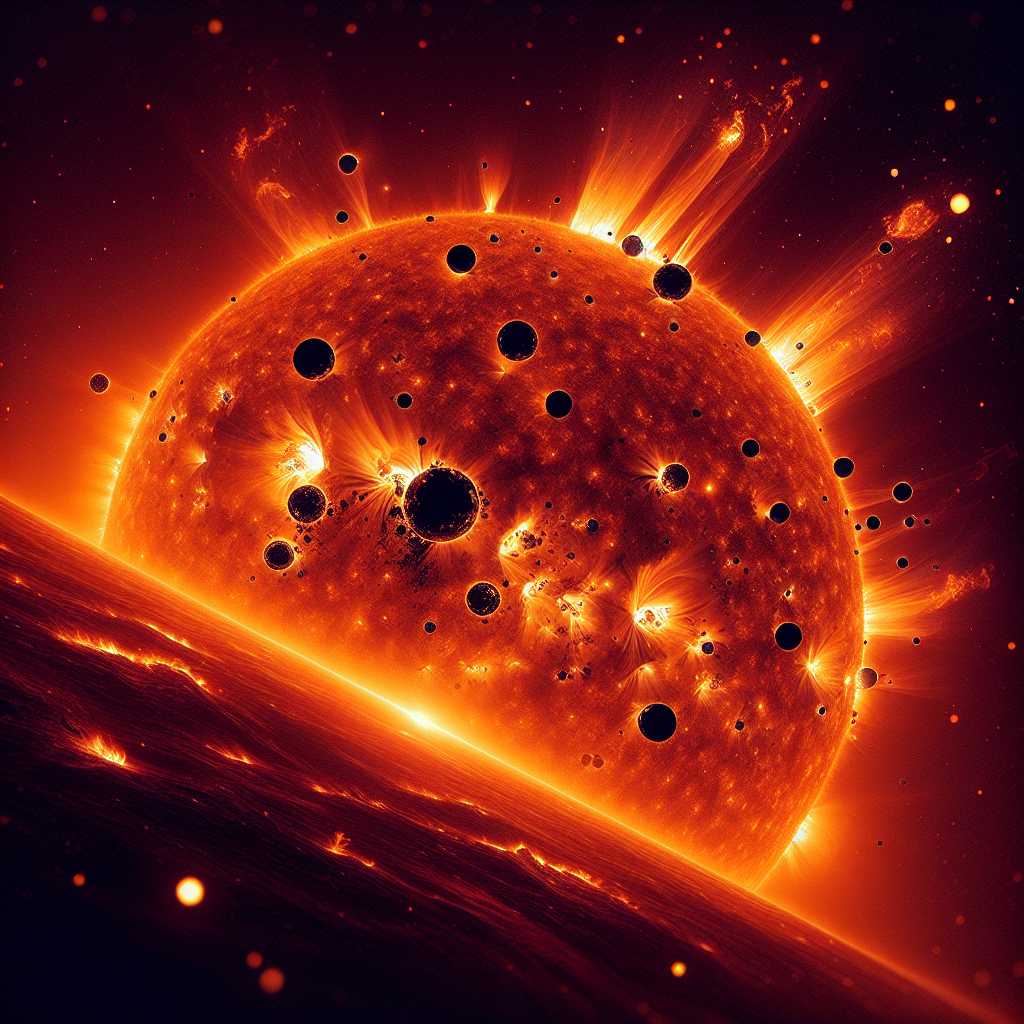Understanding Our Nearest Star: The Sun and Its Significance in the Solar System
The Sun is the central star of the solar system and perhaps the most vital celestial body for life on Earth. For centuries, humankind has revered and studied this brilliant sphere of plasma to unlock the mysteries of its power, its influence on the planets, and its role in the broader cosmos. This article will delve into various aspects of the Sun, including its properties, life cycle, and the impacts it has on Earth and beyond.
The Sun’s Basic Characteristics and Composition
Understanding the Sun begins with delving into its basic characteristics. The Sun is a G-type main-sequence star (G2V) based on spectral class. This classification indicates that it is a moderate-sized star radiating a yellowish light. The core of the Sun is where nuclear fusion occurs; this process converts hydrogen into helium and produces energy that radiates into space.
Temperature and size also define the Sun. It has a surface temperature of about 5,500 degrees Celsius (9,932 degrees Fahrenheit) and a core temperature that can reach more than 15 million degrees Celsius (27 million degrees Fahrenheit). With a diameter of approximately 1.4 million kilometers (870,000 miles), about 109 times that of Earth, the Sun comprises about 99.86% of the mass within the Solar System.
The Sun’s Life Cycle and Evolution
The life cycle of a star like the Sun is determined by its mass. The theory of stellar evolution provides insights into how stars like our Sun are born, live, and eventually die. Our Sun, which was formed about 4.6 billion years ago from a molecular cloud, is currently in its main sequence phase. This is a long-lasting period in which it stabilizes by burning hydrogen in its core.
But this won’t last forever. Predictions suggest that after another five billion years or so, our Sun will deplete its hydrogen fuel. This will lead to changes in its construct; helium burning will commence, causing the sun to expand into a red giant star. Following further evolution, which includes shedding its outer layers to form a planetary nebula, it will finally become a white dwarf before fading out entirely over billions of years.
Solar Weather and Phenomena
Solar activities such as flares and sunspots underscore that the Sun is not a static body but a dynamic star undergoing continuous changes that can affect Earth in tangible ways. Solar flares, which are sudden eruptions of high-energy radiation from the stars’ surface, can disrupt satellite communications and power grids on Earth.
Moreover, sunspots—cooler regions on the Sun’s surface caused by magnetic disruptions—are often sites of such flares and coronal mass ejections (CMEs). CMEs send out vast quantities of plasma and magnetic field from the Sun’s corona into space. These can generate geomagnetic storms that can create spectacular auroras but also have the potential to disrupt navigation systems and satellites.
The Nexus Between the Sun and Earth’s Climate
As the primary source of energy for Earth’s climate system, effects wrought by changes in solar radiation are extensive. Variation in solar output can drive climate patterns and influence longer-term warming or cooling trends on Earth. Ultraviolet radiation plays a critical part in heating Earth’s stratosphere, with implications for weather patterns due to interactions between atmospheric layers.
оAdditionally, through photosynthesis, solar energy is responsible for nearly all natural energy sources on Earth leading to plant growth, which consequentially supports life across various ecosystems.
Human Interaction with Solar Power
In recent centuries, technologies have been developed to not just observe solar phenomena but to also harness solar energy for human use. Advances in solar panels or photovoltaic cells have facilitated solar power as an integral renewable energy source globally. With declining costs for solar panels and improved storage solutions, societies are adopting solar power worldwide at an accelerating pace to replace fossil fuel-dependency, aiming to achieve sustainability goals and reduce carbon emissions.
Refocusing on Space Exploration: The Latest Solar Missions
Recent missions like NASA’s Parker Solar Probe launched in 2018 and European Space Agency’s Solar Orbiter unveiled in 2020 contribute significantly to our understanding of how the Sun functions and interacts with planetary environments within our solar system. Parker Solar Probe is set to fly closer to the sun than any prior mission, studying its outer atmosphere; simultaneously Solar Orbiter will obtain detailed imagines of the Sun’s polar regions while investigating its influence on “space weather.”
Understanding Historic Cultural Relationships with The Sun
Throughout human history and across cultures, the Sun has always earned a central place in mythologies and religions—it has been worshiped as a deity presiding over life and death or seen as a symbol of omnipotent soul or consciousness guiding righteous paths. From Egypt’s Ra to Japan’s Amaterasu, civilizations have aligned numerous rituals reflecting their revere or fear towards this celestial body.
